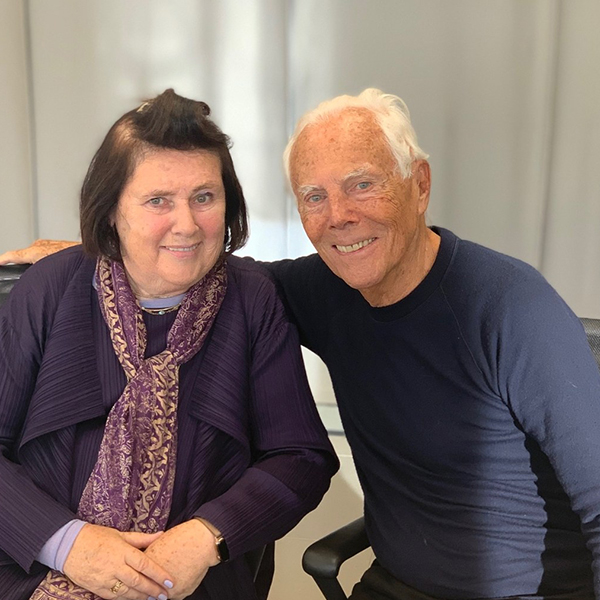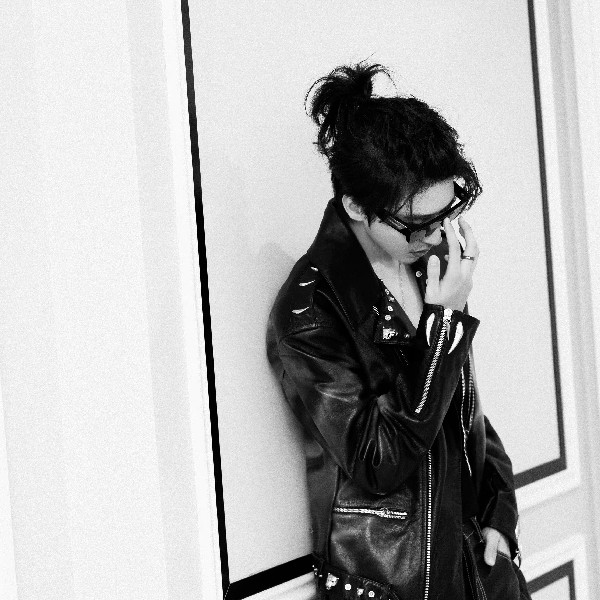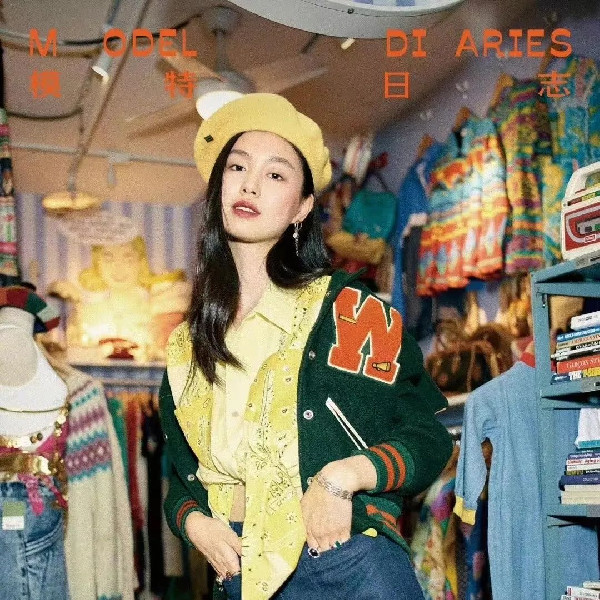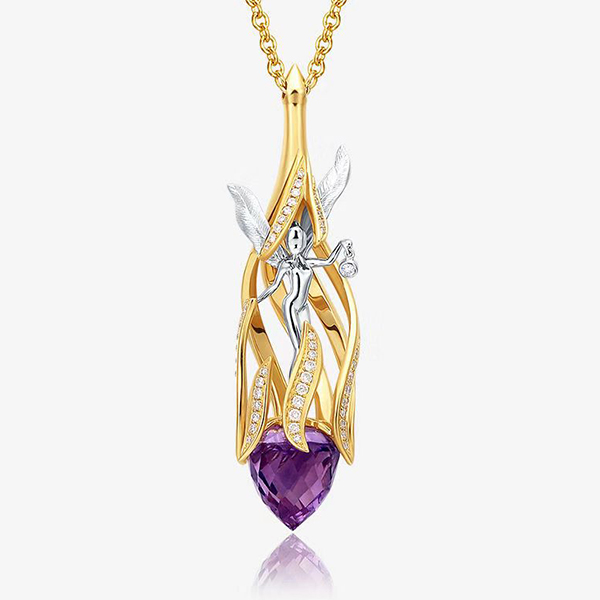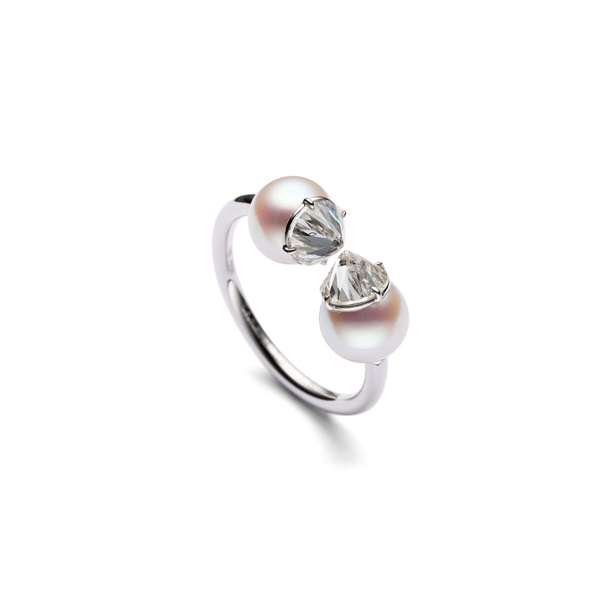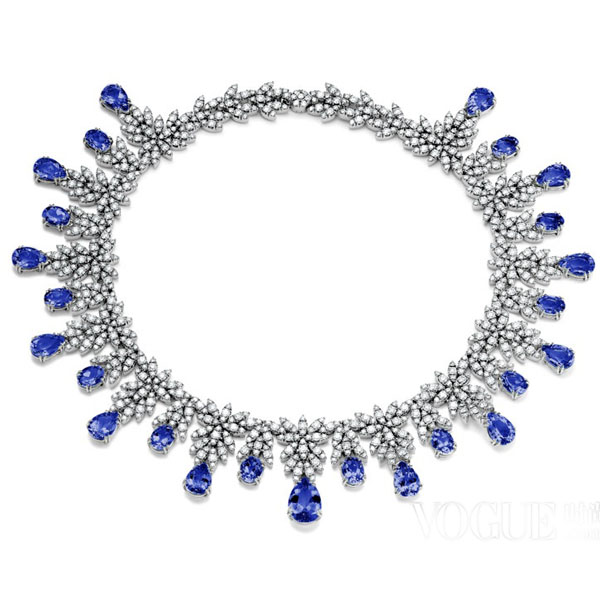敬请期待中文版
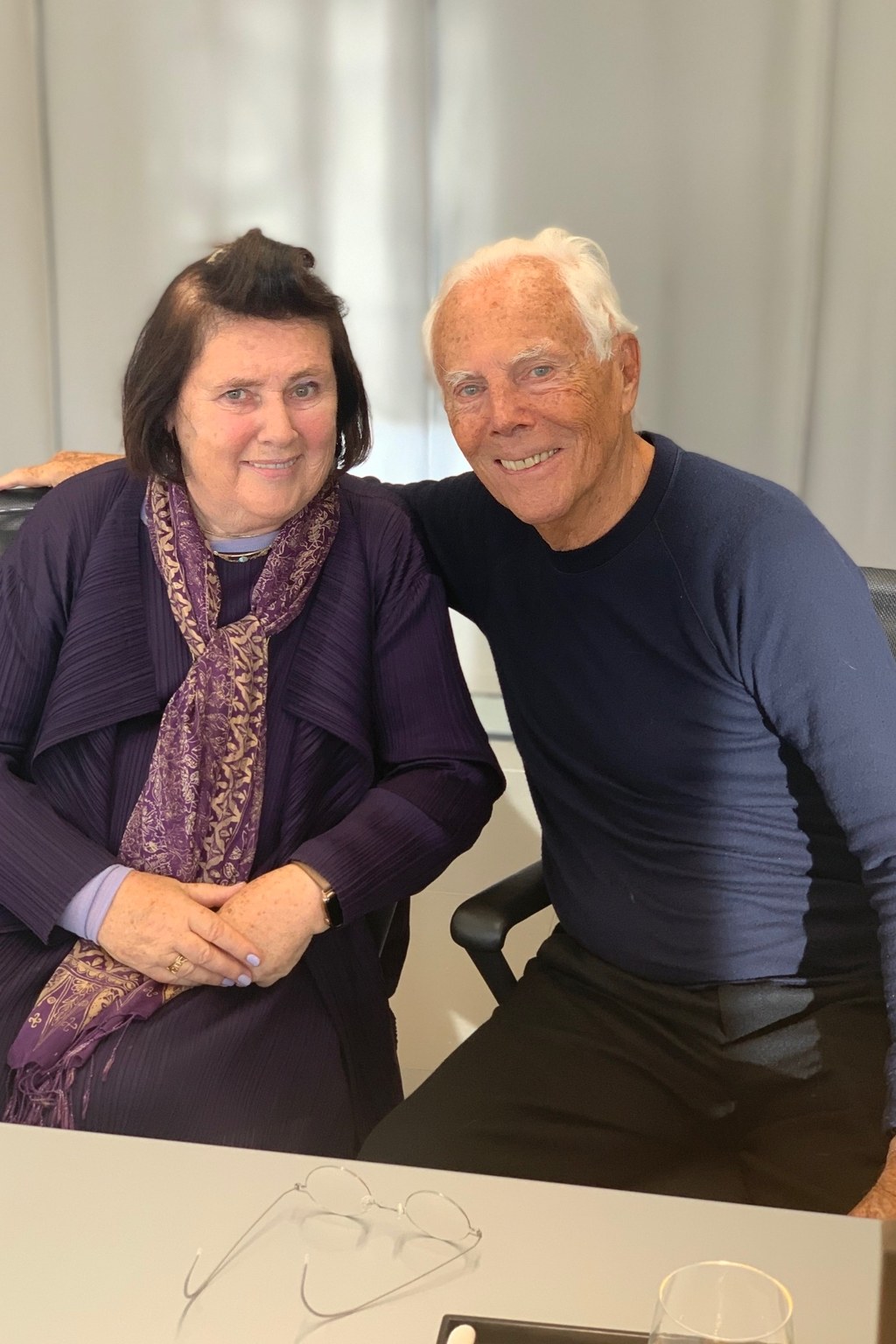
© Natasha Cowan
Giorgio Armani gave a big belly laugh – shaking a smooth stomach streamlined by daily exercise over the last three decades.
“Look!” He said, pointing down to a model’s marginally quirky footwear – compared to her trim and slim outfit.
I understood the message. Earlier, in the library of the designer’s Milan campus – that spare building created by Japanese architect Tadao Ando – we had talked about English eccentricity. That is the reason, the Italian maestro thinks, why the UK has been so tardy in acknowledging his position in the fashion firmament.
“This award means something to me – it’s so important and prestigious,” Armani said, referring to the Outstanding Achievement award he will receive on Monday, 2 December, at the 2019 Fashion Awards held by the British Fashion Council at the Royal Albert Hall in London.
“Even though I am the last – and I am not going to forgive the English for that,” the designer, 85, said with another wide grin. “Maybe it’s because I don’t do eccentric fashion, English people have only now understood my evolution.”
And why is that?
“I know that the old style of English fashion for men is over – it changed, the world has changed – no one smokes pipes any more,” Armani replied. “There aren’t that many clubs for older people – so fashion cannot live in the past. But thanks to British eccentricity, they have managed to break the rules of fashion and move it forward.”
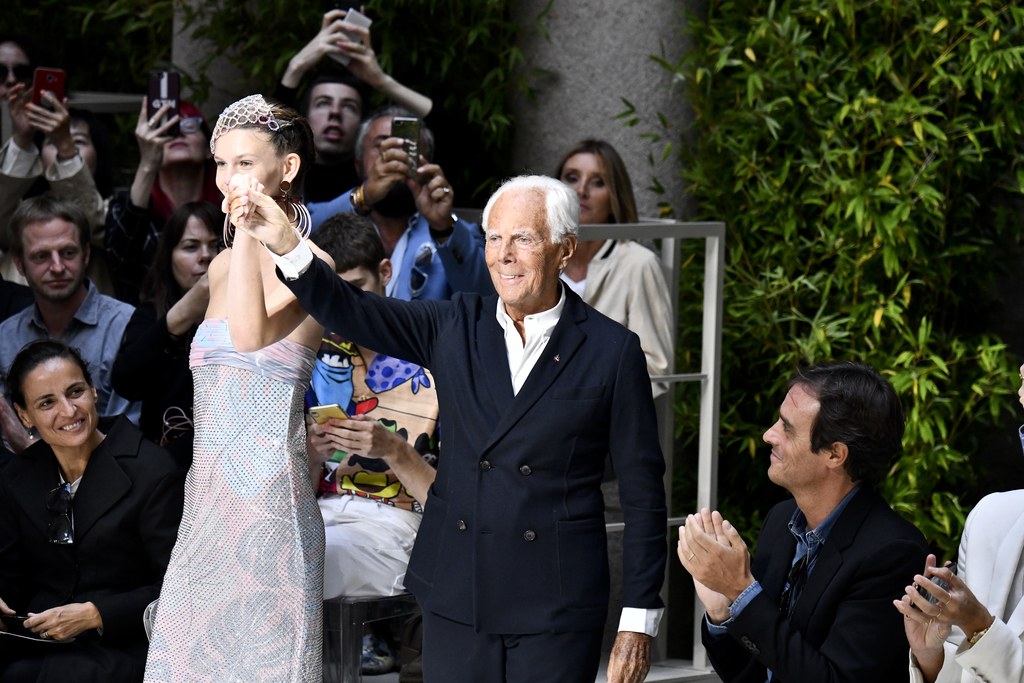
Giorgio Armani takes a bow on the runway of his SS20 show held at his Via Borgonuovo home in Milan in September 2019
© Victor VIRGILE / Gamma-Rapho / Getty Images
All this was said before Mr Armani (as he is known throughout his mighty empire) had put on a display at his Milan hotel of a brand new business: fine jewellery with a black and white theme of diamonds, onyx and rose gold with a few flashes of colour. This was the first time he has extended his kingdom into diamonds and pearls (apart for his one-off high jewellery pieces for the Privé couture collection).
As if a new jewellery venture were not enough, another display before the on-stage show offered a past-and-present exhibition of accessories. Laid out in the Armani/Silos building, which serves as a fashion museum opposite his headquarters, the designer had decided to show vignettes of his accessories. The display, named “Accent of Style”, melds pieces he had designed 40 years ago alongside current bags, shoes and decoration.
“We have done hundreds and millions of accessories over the years, but nobody talks about them and I am frustrated,” the designer said about pieces inspired by nature or evening accessories with glittering surfaces.
“My challenge is not to be able to sell accessories,” he announced, with a hint of irony that pervades his apparent solemnity. “Everybody tells me that the fortune of all the other brands is that they sell mostly accessories. I sell very few – so I can always sell more. I do fashion, sports clothes, young people’s clothes – but accessories are not quite there yet.”
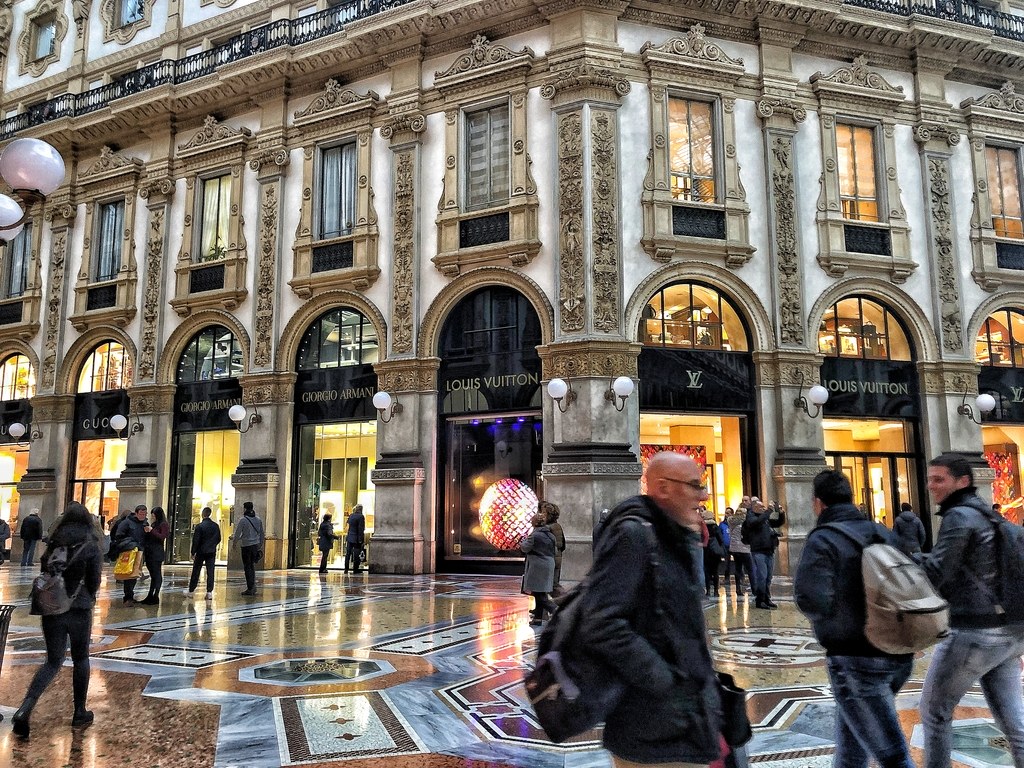
The new Giorgio Armani accessories store in the Galleria Vittorio Emanuele II sits between Louis Vuitton and Gucci
© Natasha Cowan
With this new enthusiasm, the designer has recently opened a store – and plans a further one – in Galleria Vittorio Emanuele II: the historic covered arcade leading to the cathedral. This is where all the heavyweight luxury companies are now installed and Armani has a dedicated space for bags, especially his newly reissued La Prima design.
At the pre-autumn/winter 2020 show (the first time this fashion range had been shown publicly by the designer), I noted that the models were swinging bags and wearing bold jewellery. But the essence of the collection was – as ever – trousers and jackets: the former softer and the latter more curved. The mix was ultimately based on the famous Armani masculine-meets-feminine look, with male models in variations of classic tailoring. Its surprise factor was the introduction of a Chinese lacquer red.
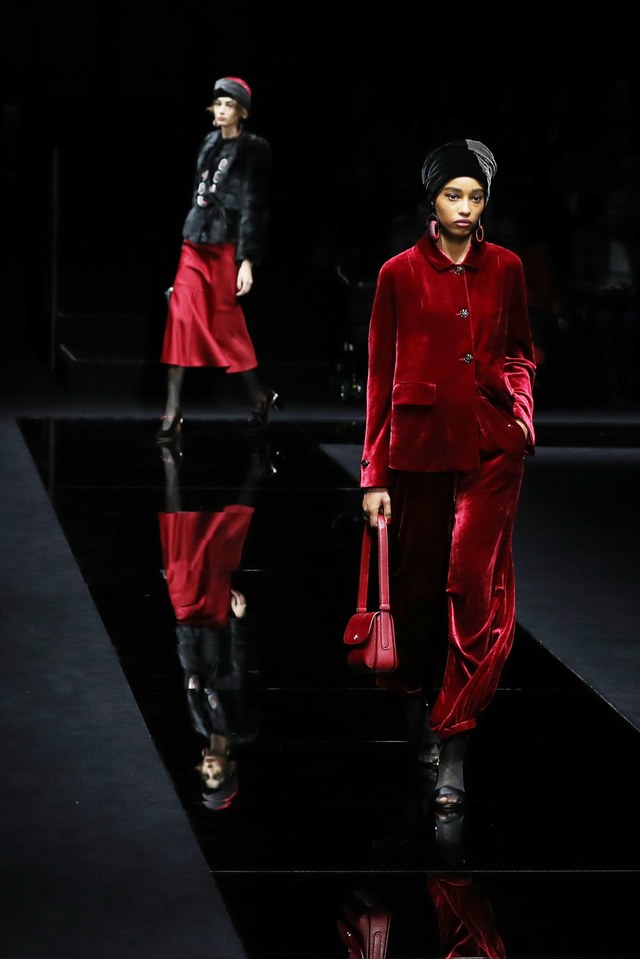
Striking red looks from Giorgio Armani's Pre-AW20 show
© Vittorio Zunino Celotto/Getty Images
“It wasn’t easy because we changed it many times,” Armani said. “It’s commercial so it has to be oriented towards the customer. It also needs to be a bit spectacular. But it is not a fashion show where you can use your fantasy and you are happy if you just see one big page in the newspaper – which is how it is with couture.”
The designer was referring to the fantasy elements in his Privé collections, shown in Paris during haute couture and worn by so many famous performing artists.

Glamour on the front row: Naomi Watts, Sophia Loren, Giorgio's niece Roberta Armani and Kate Winslet attend the Armani Privé AW17 show
© Pascal Le Segretain/Getty Images
Hollywood has loved Armani since the 1980s, with Richard Gere’s American Gigolo and its infamous sequence of soft suits laid out like lovers on the bed. To this day, Los Angeles has a continuing fashion love affair with Armani, viewed as the Italian fashion hero who discarded the hefty structure of traditional men’s suiting – and also offered women a female version of softened masculinity.
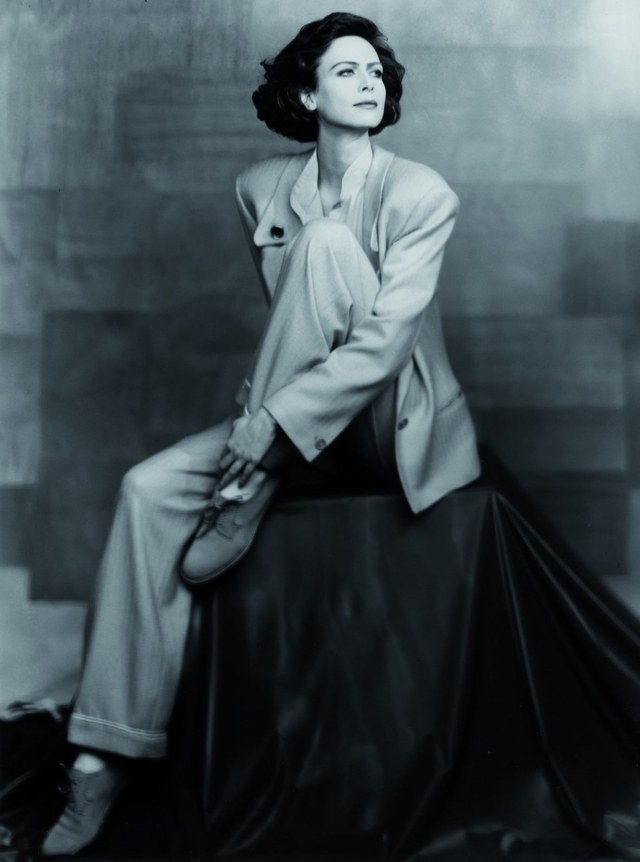
An example of Giorgio Armani's famous unstructured soft tailoring, AW87
© Courtesy of Giorgio Armani
“I was lucky that the women were more modern at that time,” Armani said, “So it was not Zsa Zsa Gabor but Lauren Bacall. She loved fashion. And she had a physical structure that was perfect for my clothes.”

Lady Gaga wearing Armani Privé from the AW18 collection at the premiere of her film A Star Is Born at the 2018 Toronto Film Festival
© Kevin Winter / WireImage
Armani, ever discreet and even modest, does not label himself as the designer who invented red-carpet dressing, although from Beyoncé to Lady Gaga, Sophia Loren and Julia Roberts, he has dressed them all. Not to mention his clean sweep of the male stars of Hollywood.
At the end of the Milan show, Armani took his bow in a subtly new look that’s very much of this moment: a double-breasted suit jacket, tailored but soft, like a sweater, and slim trousers finished off with sneakers.
All the financial figures surrounding Armani are enormous. His personal wealth is valued at six billion euros as the sole owner. There are hundreds of stores across the world, a hotel business started in Dubai and Armani/Casa, homewear that reflects his penchant for Japanese style. He has a sprinkling of private homes, mostly near water, including on the Italian island of Pantelleria and the Caribbean island of Antigua.

The Armani headquarters on Via Bergognone designed by architet Tadao Ando which houses the offices and theatre where many of the designer's fashion shows are held
© Eddy Buttarelli/REDA&CO/Universal Images Group via Getty Images
I asked him to look back – not to his tough, post-war childhood in Piacenza, near Milan, with his parents struggling to raise their family and he and his brother holding puppet displays; nor to his early days as a medical student, then later a window dresser for Milan’s La Rinascente store and going on to learn menswear from Nino Cerruti.
It was rather his partnership with Sergio Galeotti that was key for Armani. As a designer, he had no formal training but learnt to design by studying the sketches of Yves Saint Laurent. His fashion success came only as he turned 40.
Galeotti – his partner in business as in life – put the Armani company in the fast lane, opening stores at break-neck speed and introducing the collections to America. Then, in 1985 after a decade running the company together, Armani was stopped in his tracks by the death of Sergio from AIDS – that scourge of the creative world.
“It was very difficult: not having someone next to you to give you security and to exchange ideas,” Armani admitted. “Others didn’t have the power that Sergio had over me. I was also scared because many people were saying that I wasn’t going to manage – especially having no commercial experience.”
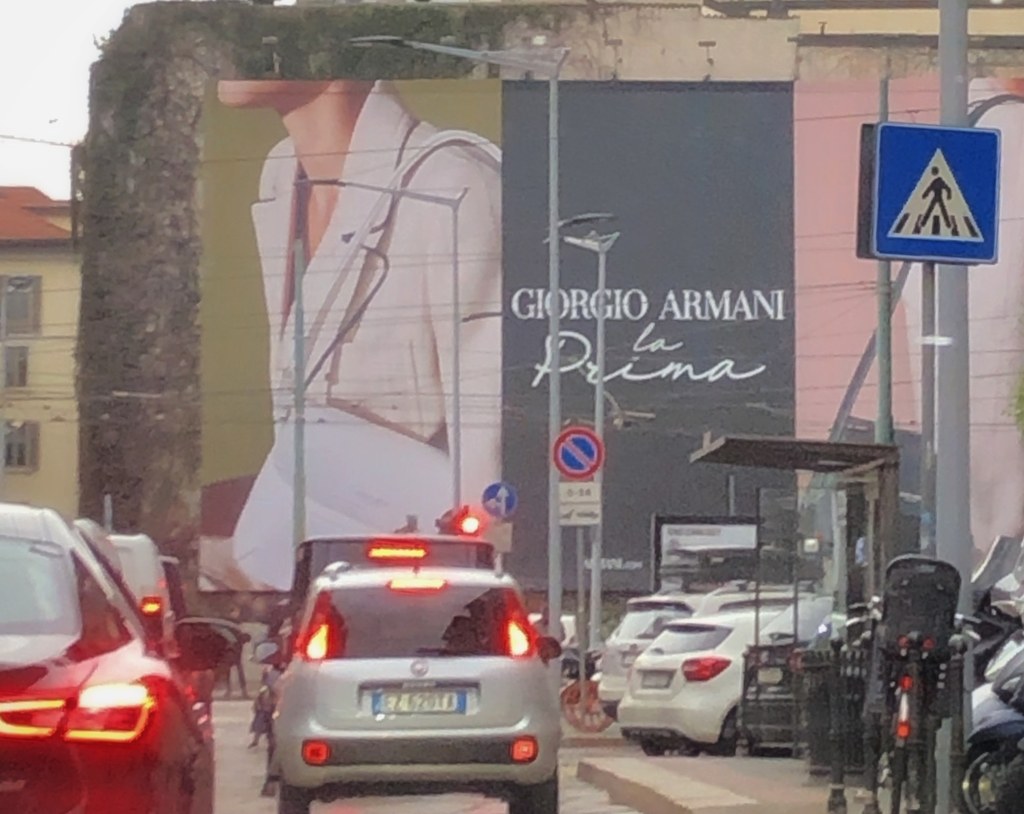
An advert for the new Prima bag is displayed on the intersection of Via Cusani and Via Broletto in Milan, a billboard space on which Armani has advertised for many years
© Natasha Cowan
Part of Armani’s success is his constancy, which he plans to display in London at Monday’s awards ceremony. In an age when brands seem so quickly to change designers – and therefore vision – the Italian designer offers a sense of continuity.
It is not – as the designer says – the British way.
There is, of course, another Italy: showy, colourful and hot, which I imagine as a north-versus-south split. My reference to Dolce & Gabbana’s sunny style met with stark words from Armani: “It’s not my language”. Or as we Brits might say: “Not his cup of tea”.
“It’s true,” the designer says. “There is a different fashion in the south. If you look at my past, I’ve done a collection that looked like young Neapolitan peasants. But women know now that there are different ways to dress. You can play. That is eccentricity.”
Given the vast number of Armani stores across the world – the different fashion lines, those accessories, hotels, stores devoted to homewear and now the fine jewellery – can it be believed that the designer does everything himself?
I watched him prepping for the Milan show, choosing the shoes, swapping the hats, making judgements with his own eyes, surrounded by his supporters. I then took a deep breath and asked him the crucial question: “Are you confident that everything is going to be in order for your company to exist in 50 years’ time?”
“It’s a hard question to answer – times change so much,” he replied. “And now I am going to say something that is probably going to make your hair stand on end: I find it very strange to talk about luxury today with all that’s happening in the world.”
“I am not comfortable if I’m spending millions to do a show when there are people suffering – more and more in Africa with the effects of climate change,” he continued. “I think we have crossed a line. People were once happy to see a plastic bottle of water but now the world has changed and is changing.”

A live screen mounted in the reception area of Armani's Milan HQ Milan displays the company's energy usage
© Natasha Cowan
Indeed. And also at Armani. At the Milan events there were quiet grumbles, especially from external buyers, at recent changes at the company, for example the merging of jeans with the rest of the sales. And just one month after next week’s cheers for Armani in London, the flagship store on Via Monte Napoleone will discreetly close, leaving an empty space expected to be gobbled up by LVMH, already positioned next door.
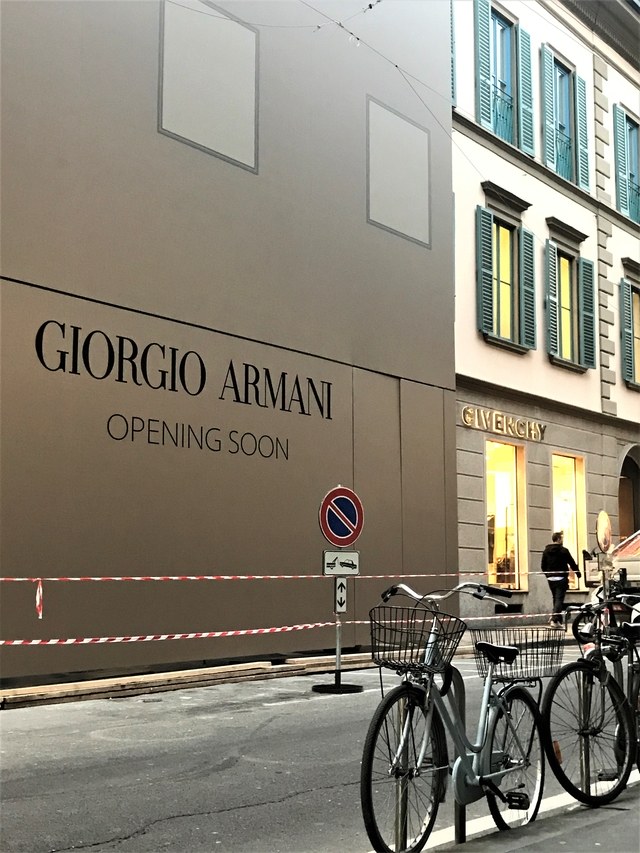
The site of Giorgio Armani's new Via Sant'Andrea store in Milan
© Natasha Cowan
Armani will move to Via Sant’Andrea, which has a feeling of local shopping with stores from Jil Sander to Bottega Veneta and Roger Vivier already installed. And it might be significant that two recent shows – men’s and women’s – have been shown in the courtyard of his personal home in central Milan which created a back-to-the-source feeling.

Crowds outside Armani's home in Via Borgonuovo in Milan's Brera District which became the location for the SS20 show
© NATASHA COWAN
Family remains important to Armani and he is close to his sister, Rosanna.
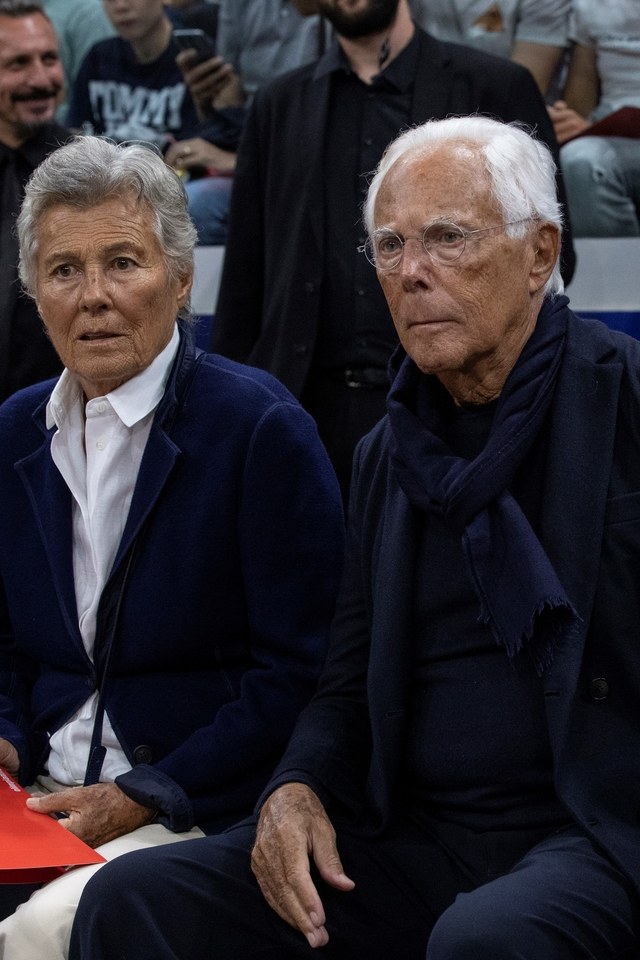
Giorgio Armani and his sister Rosanna watch his basketball team AX Armani Exchange Olimpia Milan in September 2019
© Emanuele Cremaschi/Getty Images
I asked Armani what drove him to such dedication over so many years.
“My mother was very important to me – she was very, very strict,” he said. “She also said, not long before she died, ‘Giorgio you should stop. Your job is taking over your life. You need to have time for yourself.’”
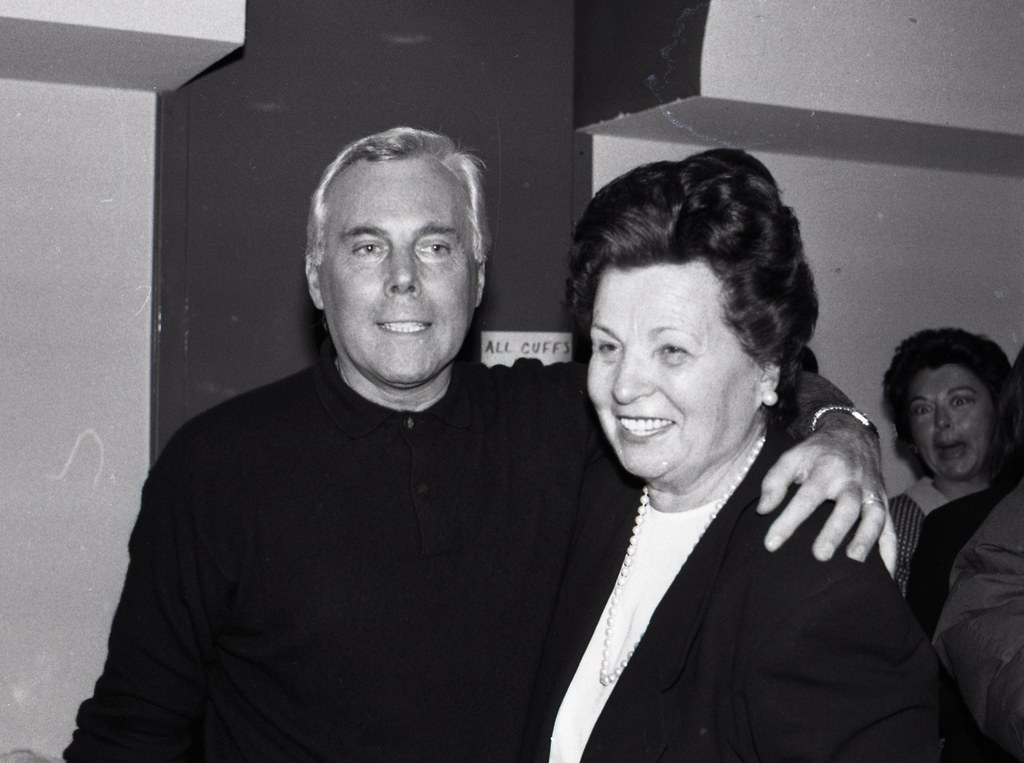
Giorgio Armani with his mother Maria at the end of his AW87 show in Milan, March 1987
© Vittoriano Rastelli/CORBIS/Corbis via Getty Images
So, the great designer bought himself that raft of homes that he has little time to visit. And makes money that he does not spend, except perhaps for his showy yacht.
“One thing that I never lacked was money,” Armani explained. “I was always very careful with money. I never got too enthusiastic about things. I am able to say ‘no’ even when there is a very good, exciting project.”
A fine example of his care over expenses were the folded chairs lined up at the back of the Tadao Ando building – returned from hosting a show in Japan and to be used again. A member of his staff told me that the designer still thinks in “old” Italian money, prior to the euro, and sometimes gasps at how many “lire” everything costs.
Armani’s mother rarely discussed his work, but famously said to her son: “No more beige,” referring to the neutral colour on which the designer built his empire. Did the maestro heed her words? Or will that greige effect, so fashionable again, return after all these years?
“Half and half,” he replied. “She was so right. And whenever people say I should think of beige again – I think of my mother.”
I took it that the answer was “no”.

A touch of beige in Armani's Pre-AW20 show
© Vittorio Zunino Celotto/Getty Images
All products featured on the website are independently selected by our Editors. However, when you buy something through our retail links, we may earn an affiliate commission.

